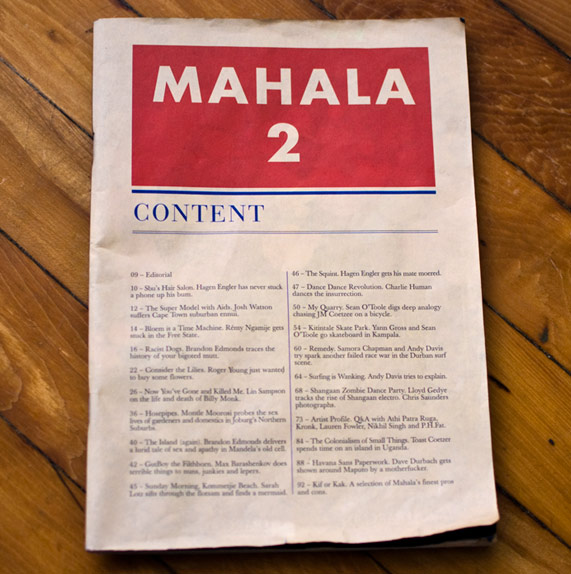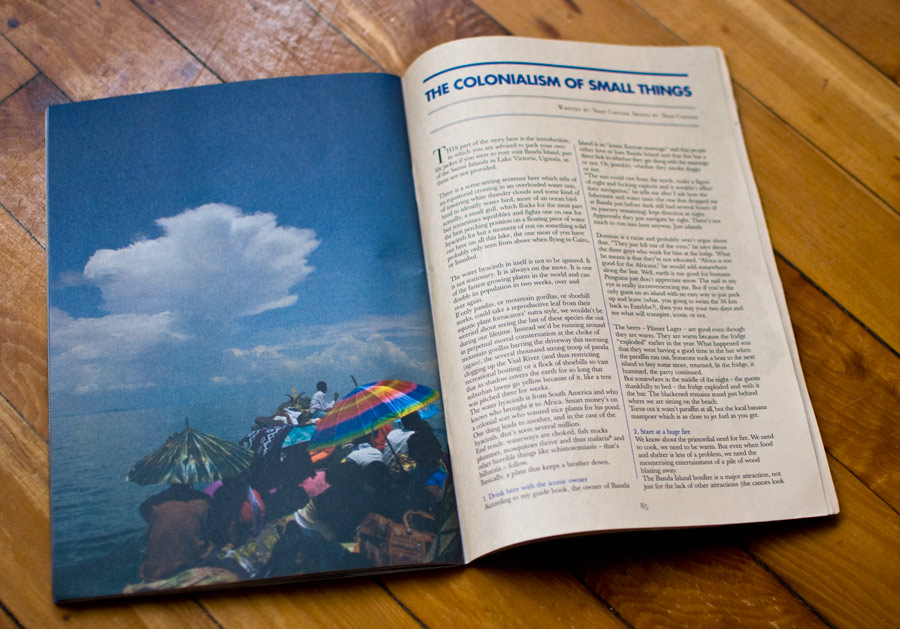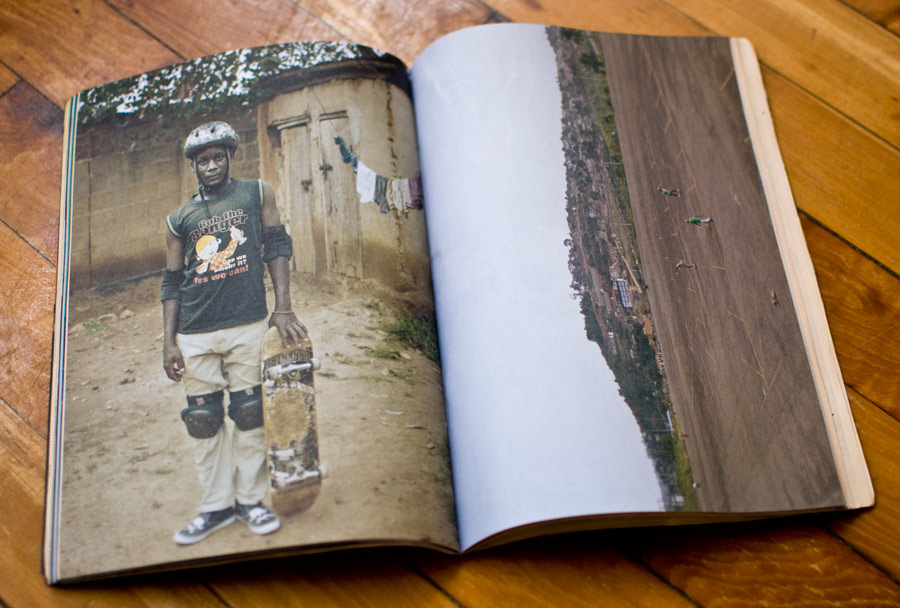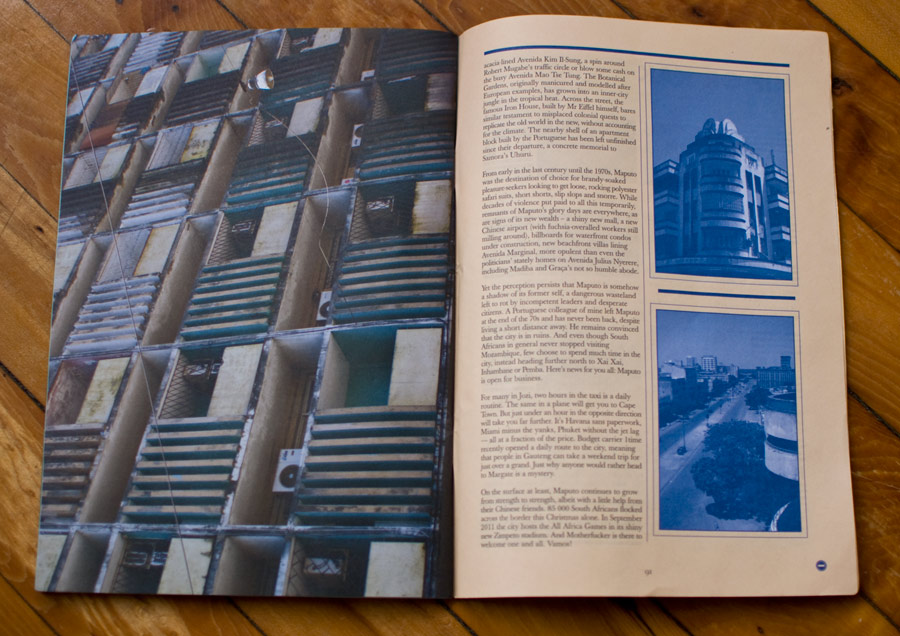Mahala Magazine
South Africa’s subversive new publication takes on the country’s contemporary creative culture


Founded to “really assault the dominant narratives in our own unique way,” the South African magazine Mahala goes against the typically glossy grain with an “un-designed” style that allows its similarly raw content to shine. The publication launched in August 2010 and, now on its second issue, supplements a daily website—both the brainchild of Andy Davis.
Stories like “Surfing is Wanking,” “Racist Dogs” and “The Colonialism of Small Things”—to name just a few—shed light on topics that affect South Africans, but with its Vice magazine-style journalism, anyone interested in leading-edge culture will appreciate this unconventional upstart.
We recently probed Davis to find out more about Mahala’s beginnings, its future, and the overall state-of-mind in South Africa.
What do you most hope to accomplish with Mahala?
I want to create a platform for a racially-integrated South African youth culture that can interrogate our experience, our culture and really just provide an impetus for people to make good, relevant stuff. South Africa is still a radically segmented place. And we’ve got a whole backlog of shit that’s been swept under the carpet and kept out of view. I want Mahala to pick at those edges, to go where the art, music, literature, etc. intersects with politics, society and weird-ass South African dynamics like race relations and socio-economic disparities.

The online site tries to crunch through what’s happening in South Africa on a daily basis. We aim to publish three to four stories a day. The debates we get going in the comments show that our audience really gives a shit about what we say, and they have a stake in the culture so they all pile in and make their voice heard, which is a good thing. But it can be quite rough on the comment boards. We have a non-intervention policy. We don’t delete anything. If people want to hang themselves kak vibes, so be it.
We hold the print magazine to a higher standard. We want people to read everything twice. It’s supposed to be a real collector’s item. But it also gives us the latitude to publish photo features, fashion, fiction and investigative journalism that isn’t always suited to online attention spans.

What is the most challenging part of creating each Mahala edition?
Getting the right mix of words and images, without being too gratuitous or going too hardcore, but still being able to interrogate the culture and experience. I think with our first issue we were sitting on so much unreleased content that we didn’t temper it properly. So it was a bit relentless. With the second issue we got the mix a bit better varying between depth and levity. There were some almost academic style articles, hard-hitting investigative journalism, some great narrative non-fiction, fiction and some nice humor.
Another thing we really struggle to do is find good, black writers, photographers and illustrators. That’s not to say they don’t exist, it’s just that South Africa is so systemically fucked up thanks to apartheid that massive segments of the population were actively uneducated by the apartheid schooling system. So, generally speaking, anyone who is black, creative, talented and competent gets employed very quickly. And there just isn’t a plethora of young black talent beating down our doors, desperate to get published. And the last thing we want to be is a group of whiteys sitting around writing about black culture. We want to push this relationship into a “post-racial” space. Things are changing though, and it’s picking up pace. And we certainly don’t want to be those sad guys who do head counts based on skin color. But we’re still a long way off from the ideal of an equitable, meritocratic society.

Does each edition have an underlying theme?
Not yet, but we may be heading that way. I think at the moment, we don’t need to introduce over-arching themes because the culture is happening all around us and having a theme would necessarily occlude some of the most relevant and exciting stuff. Besides, I quite like the way the magazine jump cuts from narrative to narrative. I want them to stand alone and not have too much editorial unity. We always said Mahala would support a plurality of views, so it’s cool for each piece to stand alone and not be perceived as coming from central editorial authority.

What can we look forward to seeing in Mahala 3?
I think it’ll be bigger and better than Mahala 2. I thought there were some little failings in the last issue, that I’m glad to have the opportunity to rectify in the next issue. But those are mainly little publishing minutiae and insecurities. Generally the feedback has been overwhelmingly positive. At this stage a lot of the content is still in the air. We’re also working on a site redesign and, for our international readers, we’ll be making all the print mags available online as PDFs, from the next issue.
To subscribe to the print publication or receive their daily updates, visit the Mahala website.











